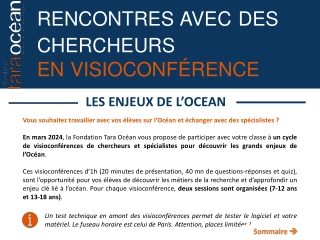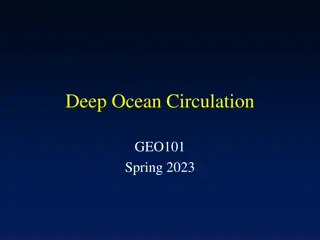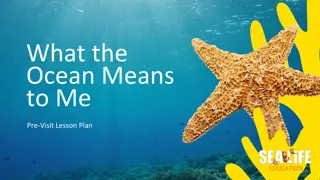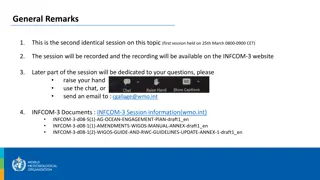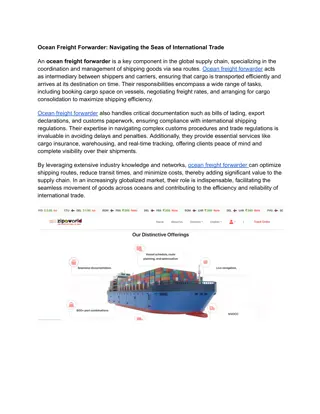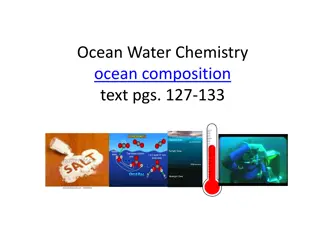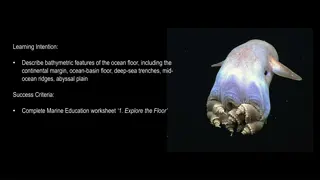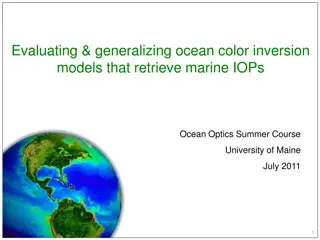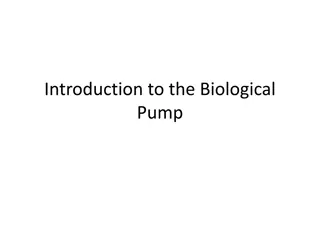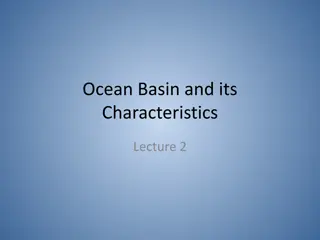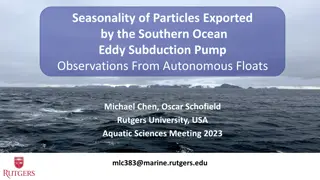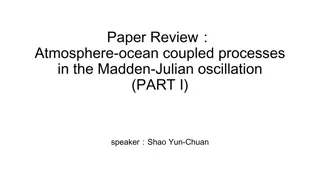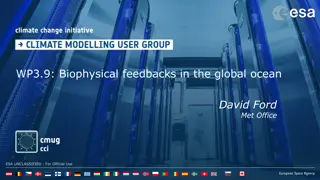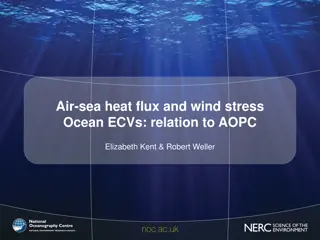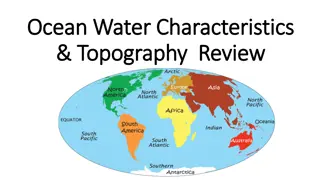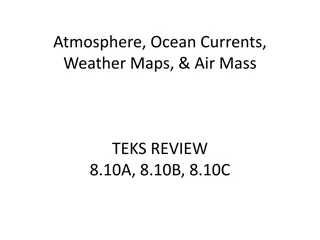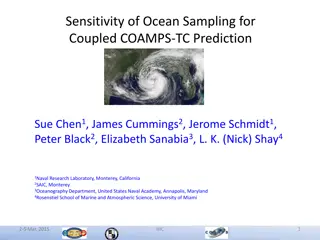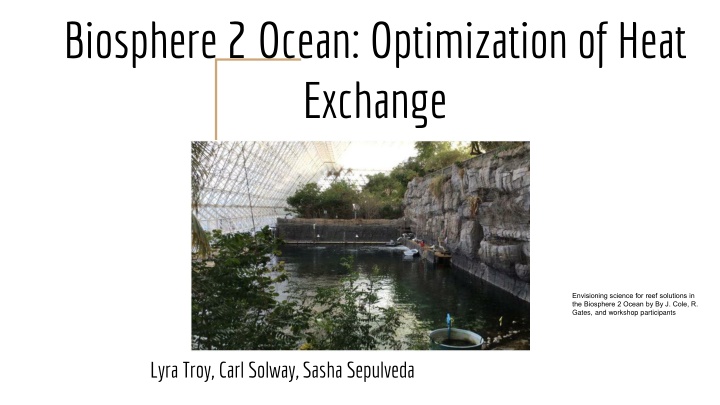
Optimizing Heat Exchange in Biosphere 2 Ocean for Reef Solutions
Explore the optimization of heat exchange in the Biosphere 2 Ocean to study coral responses to warming temperatures. Learn about the energy-efficient methods used and the challenges faced in maintaining the desired temperature range for coral ecosystems. Join the discussion on innovative solutions for reef preservation in a sustainable manner.
Uploaded on | 1 Views
Download Presentation

Please find below an Image/Link to download the presentation.
The content on the website is provided AS IS for your information and personal use only. It may not be sold, licensed, or shared on other websites without obtaining consent from the author. If you encounter any issues during the download, it is possible that the publisher has removed the file from their server.
You are allowed to download the files provided on this website for personal or commercial use, subject to the condition that they are used lawfully. All files are the property of their respective owners.
The content on the website is provided AS IS for your information and personal use only. It may not be sold, licensed, or shared on other websites without obtaining consent from the author.
E N D
Presentation Transcript
Biosphere 2 Ocean: Optimization of Heat Exchange Envisioning science for reef solutions in the Biosphere 2 Ocean by By J. Cole, R. Gates, and workshop participants Lyra Troy, Carl Solway, Sasha Sepulveda
History of B2O The widespread death of corals has been closely tied to rising ocean temperatures The B2O allows ecologists to study coral in response to warming temperatures Ecologists are not interested in energy consumption - they are interested in the temperature effects on coral This project was created when concern rose about the high cost needed to keep the B2O heated/cooled, and how to optimize the energy usage while maintain the ecologists desired temperature Envisioning science for reef solutions in the Biosphere 2 Ocean by By J. Cole, R. Gates, and workshop participants
Description (1/3) This project will oversee the modeling and optimization of heat transfer into the Biosphere 2 Ocean (B2O) Throughout the day, B2O temperature varies, and requires heated or cooled water to stay at a desired temperature The energy consumption to heat/cool water for the B2O is very large, so putting in minimal energy while maintaining the desired temperature setpoint is desired From Adams, John R at Biosphere 2
Description (2/3) One titanium plate-and-frame heat exchanger sends heated/cooled water to a single pump into the ocean body Heat exchanger requires a large amount of energy Water is well mixed, then sent back to the heat exchanger Temperature sensors near well mixed water Setpoint Temperature: 75 +/- 0.2 F Ocean: 676,000 gal Pump: 380 GPM Schematic of B20 From Adams, John R at Biosphere 2
Description (3/3) Biosphere 2 Ocean Heat Exchanger No current model between energy usage and ocean temperature exists for this particular heat transfer: the operators have a feel for the temperature data and anticipate how much energy the ocean needs ahead of time Operators are only concerned about keeping B2O within setpoint range of 23.75-24.00 C The heat exchanger itself it already optimized, but the heating loop is not
Known Results and Challenges Known results: Challenges: 1. General idea of energy consumption - we have current energy consumption numbers Known effects of temperature changes. 2. The less water needed to heat/cool, the less energy used 3. Thermodynamic models 1. Deciphering advanced P&ID s 2. No previous model 3. Making sense of data codes 4. Variability in other Biosphere 2 operations 5. Large amount of sensor data (which we don t have access to yet) a. Leads to different possible approaches
History of Optimizing Heat Exchange Used to transfer heat between two liquids (2nd law of Thermodynamics) Liquid is water in our case: one hot stream and one cold stream Energy from hot stream is transferred to the cold stream via countercurrent flow Liquid streams are separate, but are in conductive contact Traditionally, the common approach to maximize heat exchange uses Heat Exchange Network (HEN) or using specialized software Heat Transfer Rate derived from energy balance https://qph.fs.quoracdn.net/main-qimg-a58a8bb5f25ec36faf3a5a54ee570d61-c
Approach 1: Thermodynamic Relationship Match equation with data a. Data on temperature vs time b. Heat exchanger supply temperatures vs. time c. Energy consumption over time Temperature vector Temperature vector Actual Energy Vector Theoretical Energy Vector Correction factor Schematic of Points List From Adams, John R at Biosphere 2
Approach 1 (cont.): From Data to Optimization Once a rough energy relationship is understood, can begin to optimize through 3 options: 1. Heat Exchanger Network Analysis (HEN) HEN is designed to reach an energy target by allowing trade-off between energy 2. MATLAB E-NTU Model Models heat transfer between two liquids in terms of effectiveness parameter 3. MHeatX in Aspen PLUS Can model multiple inlet hot and cold streams Each method will have an array of input temperatures (or inputs will be changed) in order to generate a plot relating scenario of incoming temperatures to kW usage GOAL: Either corrected Q can be incorporated into these models, or Q can be compared as a ratio of efficiency to models output of Q
Approach 2: Machine Learning Traditional analysis methods require construction of a model before analysis can be done on the system Machine learning relies on algorithms and statistical probabilities learned from known data to infer future outcomes or system states If a simulation model is developed, then the program could be continually trained to optimize output
Methods Model free, actor critic method (Wang et al, 2017) Recurrent Neural Networks Flowchart for continuous simulation model design Controller (MATLAB) Gateway B2O Simulation Simulation Design
Methods (cont) Reinforced learning used for decision making under uncertainty Agent s goal is to learn optimal policy that maximizes an expected sum of rewards A solution will come in the form of a predictive algorithm that can optimize the system at any point in time given state input parameters
Machine Learning Goals Find a relationship between inputs and outputs Develop a program that can be trained using data gathered from B2O Develop a program that is predictive, and can iteratively optimize (stretch goal, requires modelling)
Further Applications Minimizes energy waste for Biosphere, more projects, experiments for less money Central Heating and Refrigeration Plant (CHRP), the Arizona Health Sciences Center Central Heating and Refrigeration Plant (AHSC CHRP) and the Central Refrigeration Building (CRB). hydraulically connected into one chilled water system using large diameter pipes provides chilled water and steam to the University and Medical buildings across campus. Saving energy = saving money Any heating/cooling system that utilizes such a heat exchanger - when to release water into the system in order to minimize # of times water must be (continually) released into the system.
References Wang, Yuan, et al. A Long-Short Term Memory Recurrent Neural Network Based Reinforcement Learning Controller for Office Heating Ventilation and Air Conditioning Systems . MDPI. Chemical Engineering Department, University of Alberta, Edmonton, Canada, 18 August 2017. https://www.alfalaval.com/globalassets/documents/microsites/heating-and-cooling- hub/alfa_laval_heating_and_cooling_hub_the_theory_behind_heat_transfer.pdf https://www.mathworks.com/help/physmod/hydro/ref/heatexchangertltl.html https://engage.aiche.org/HigherLogic/System/DownloadDocumentFile.ashx?DocumentFileKey=b994e5d2-5221-4546-8e0e- 571267f90366&ssopc=1 https://www.engr.mun.ca/~yuri/Courses/MechanicalSystems/HeatExchangers.pdf https://www.quora.com/How-does-a-plate-heat-exchanger-work https://biosphere2.org/content/biosphere2-scada-data Thank you to our mentor Sam McClaren, Dir. John Adams at Biosphere 2, and Dr. Gabitov

